The Factors of Production - chapter 16
16.1. The Factors of Production: Land, Labour, and Capital
- Factors of production: the ingredients that go into making a good or service
- Can be divided into 3 major categories: land, capital, and labour
- Capital: manufactured goods that are used to produce new goods
- Factors of production are rented, bought, and sold in markets, at prices and in quantities that are determined by supply and demand
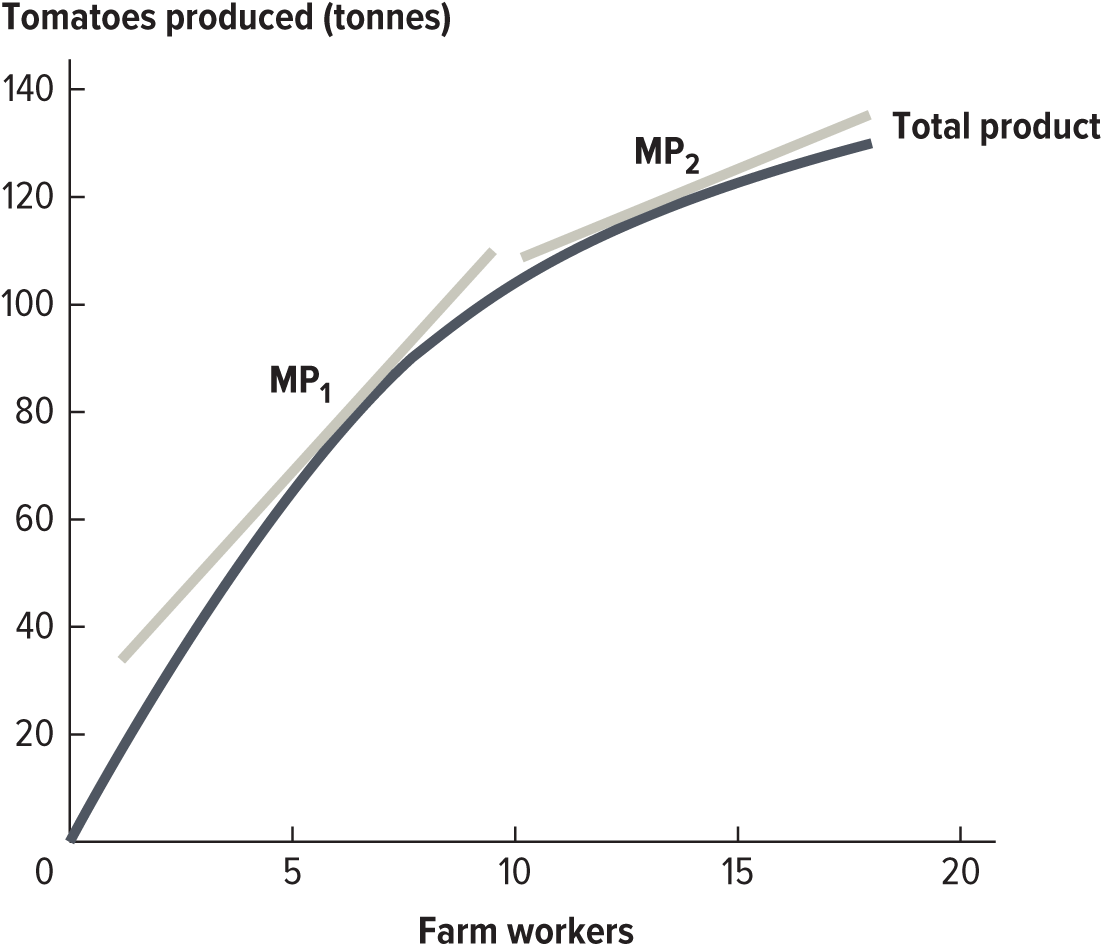
- Firms choose to produce using the combination of factors that will maximize profit
16.2. Demand for Labour
- The demand for factors of production is determined by their contribution to the value of a firm’s output
- We can use the marginal product of labour (or land or capital) to measure the increase in output gained by using one more unit of production
- value of the marginal product: the marginal revenue generated by an additional unit of input times the price of the output
- Firms will hire workers up to the point where the wage equals the value of the marginal product of labour (MR = MC)
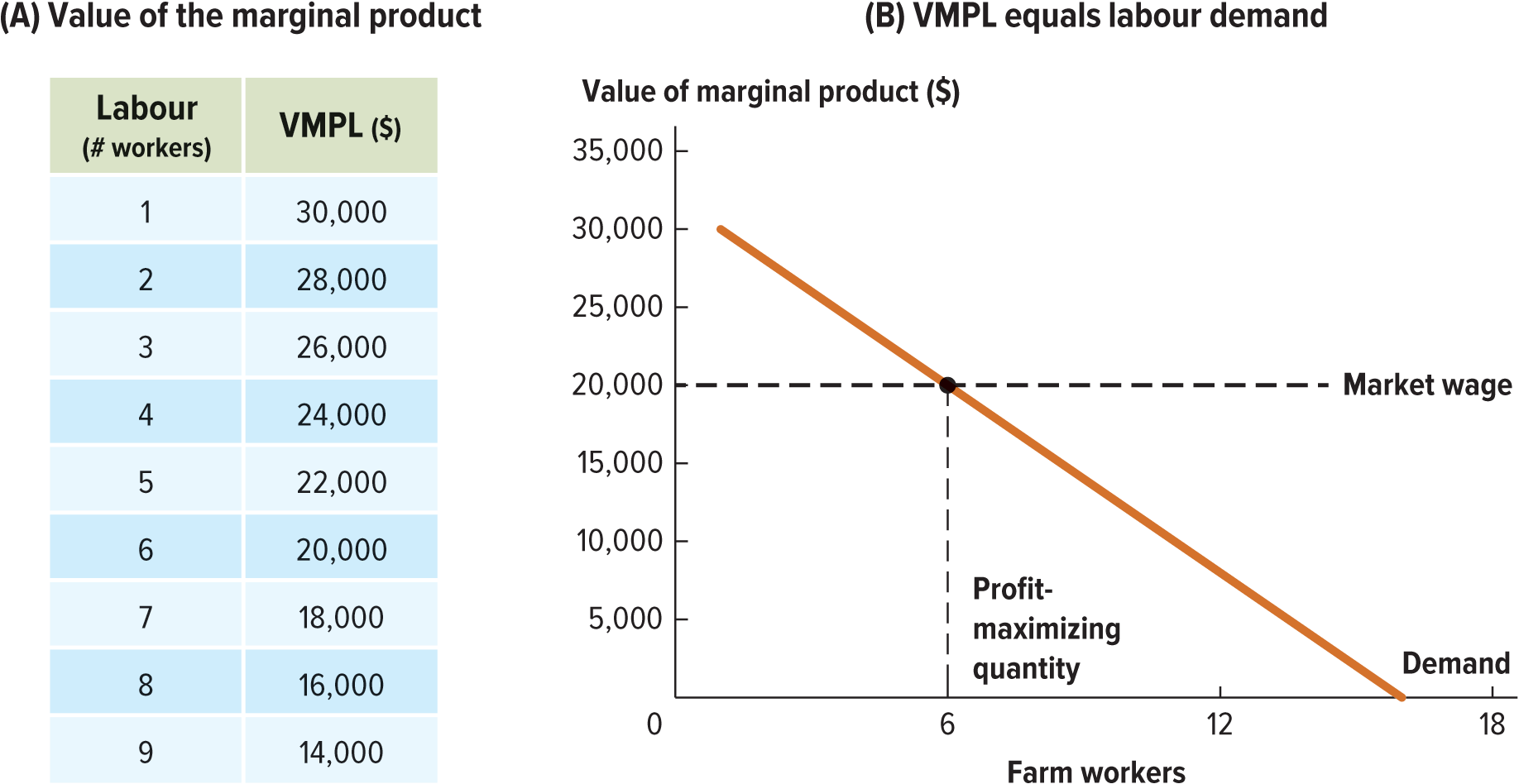
- If we graph the value of the marginal product against the number of workers, we get a downward-sloping relationship that is the same as the demand curve for labour
16.3. Supply of Labour
The supply of a factor of production is driven by the opportunity cost of using that factor in a given market
The opportunity cost of supplying labour in a particularly labour market is the time you would otherwise have spent on leisure or working at another job
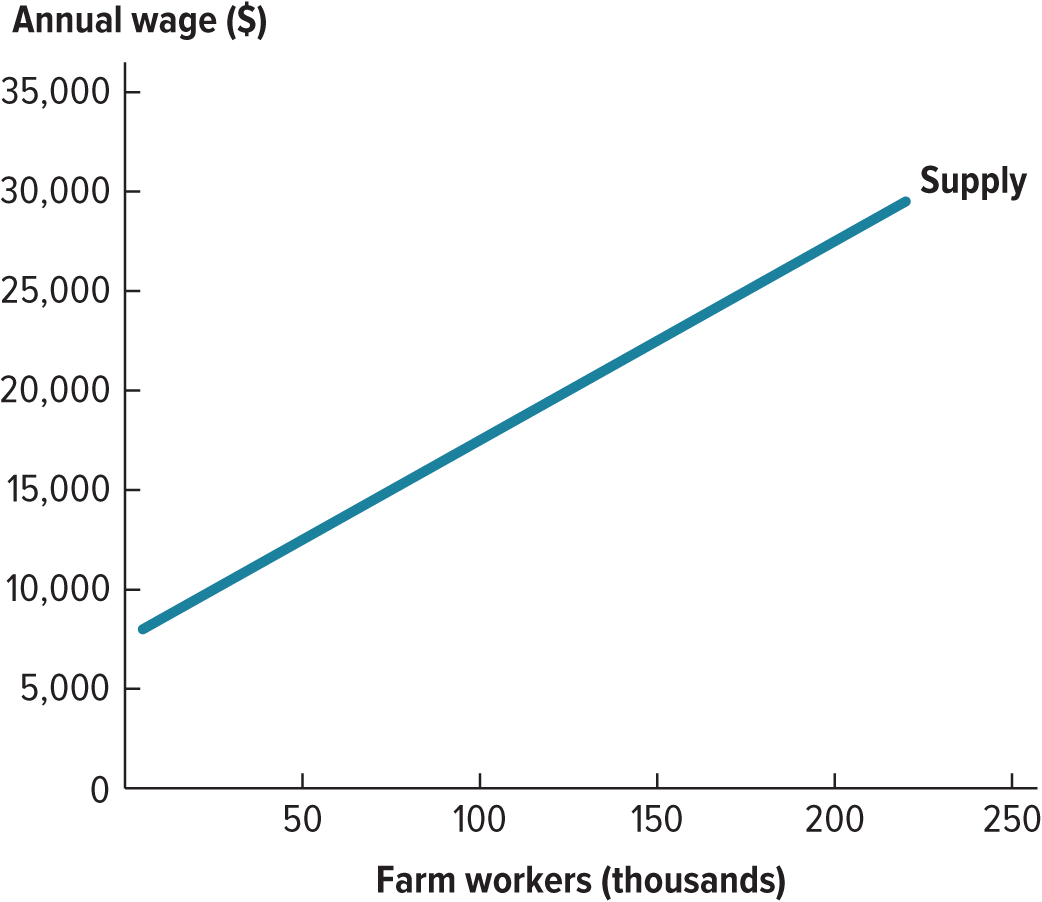
An increase in wages has two effects on the labour supply, a price effect and an income effect
The price effect causes the quantity of labour supplied to increase, all else held equal
The income effect decreases the labour supply, as workers demand more leisure time
In general, the price effect outweighs the income effect, which means that the labour supply curve slopes upward
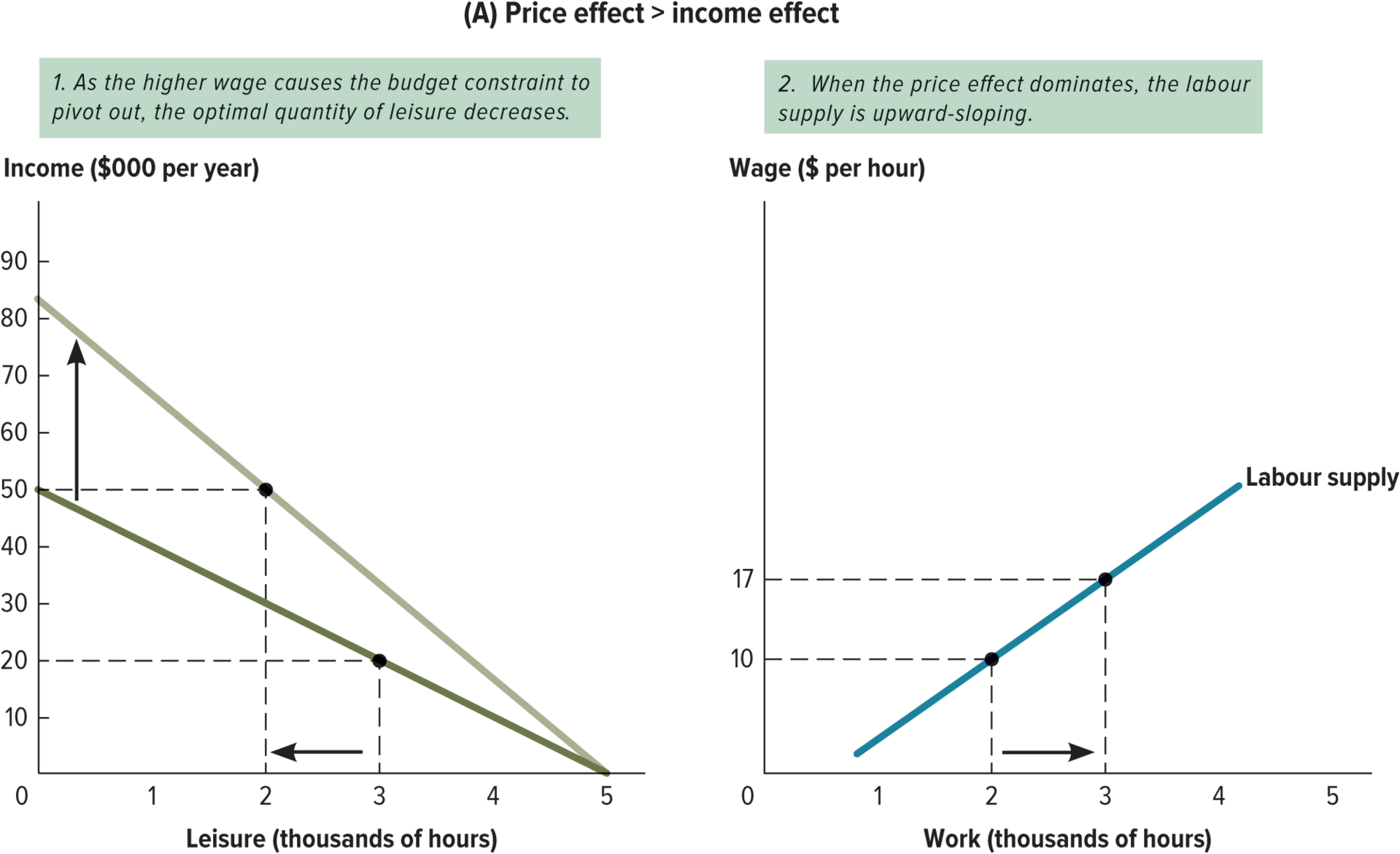
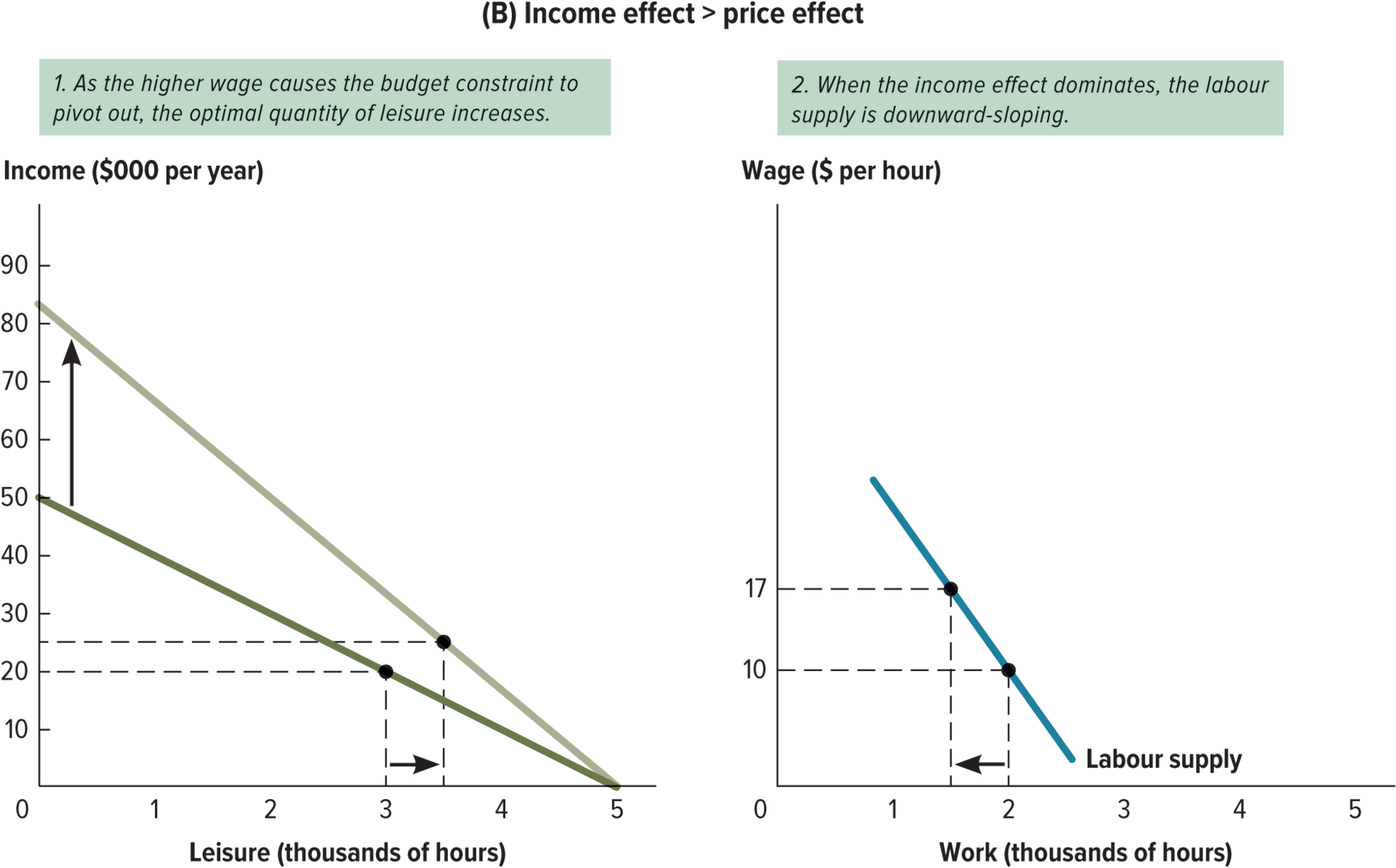
16.4. Reaching Equilibrium
Factor markets reach equilibrium at the point where
- the demand curve intersects the supply curve
- The quantity demanded equals the quantity supplied at a given price or wage
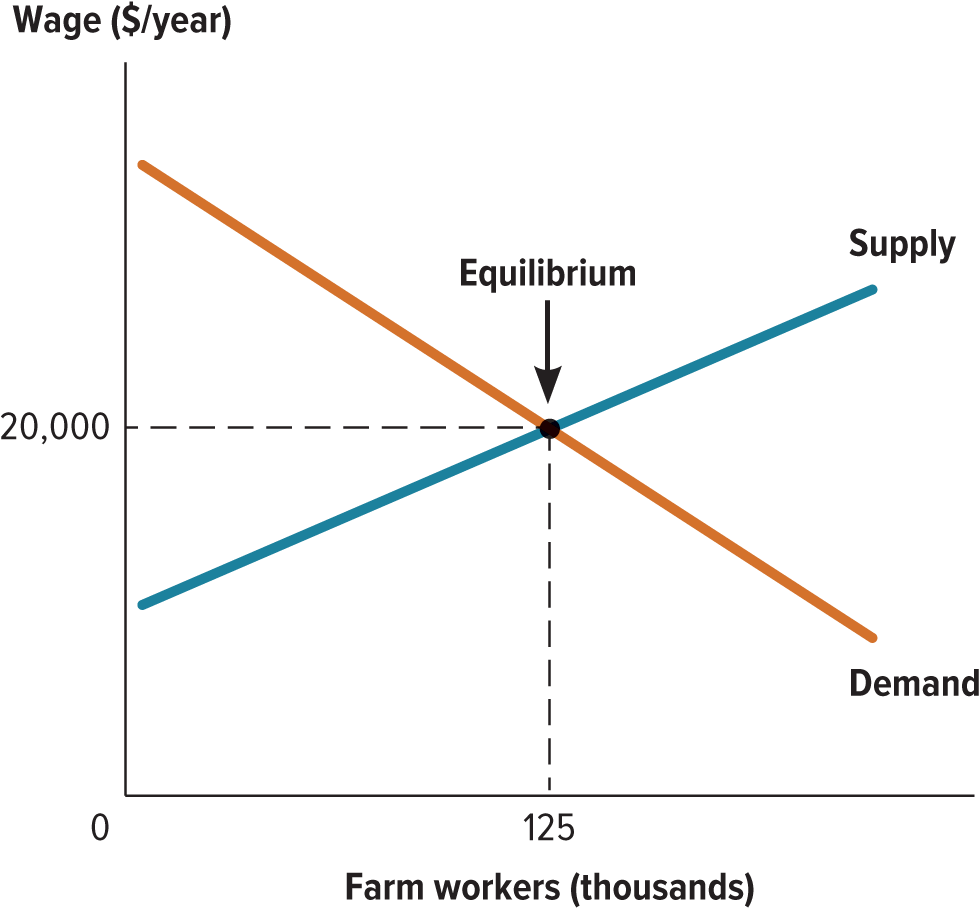
16.5. Shifts in Supply and Demand
If the underlying determinants of supply or demand change, the equilibrium point can shift
The determinants of labour demand include anything that affects the value of the marginal product, including the supply of other factors, changes in technology, and output prices
The determinants of labour supply include culture, population, and the availability of other opportunities
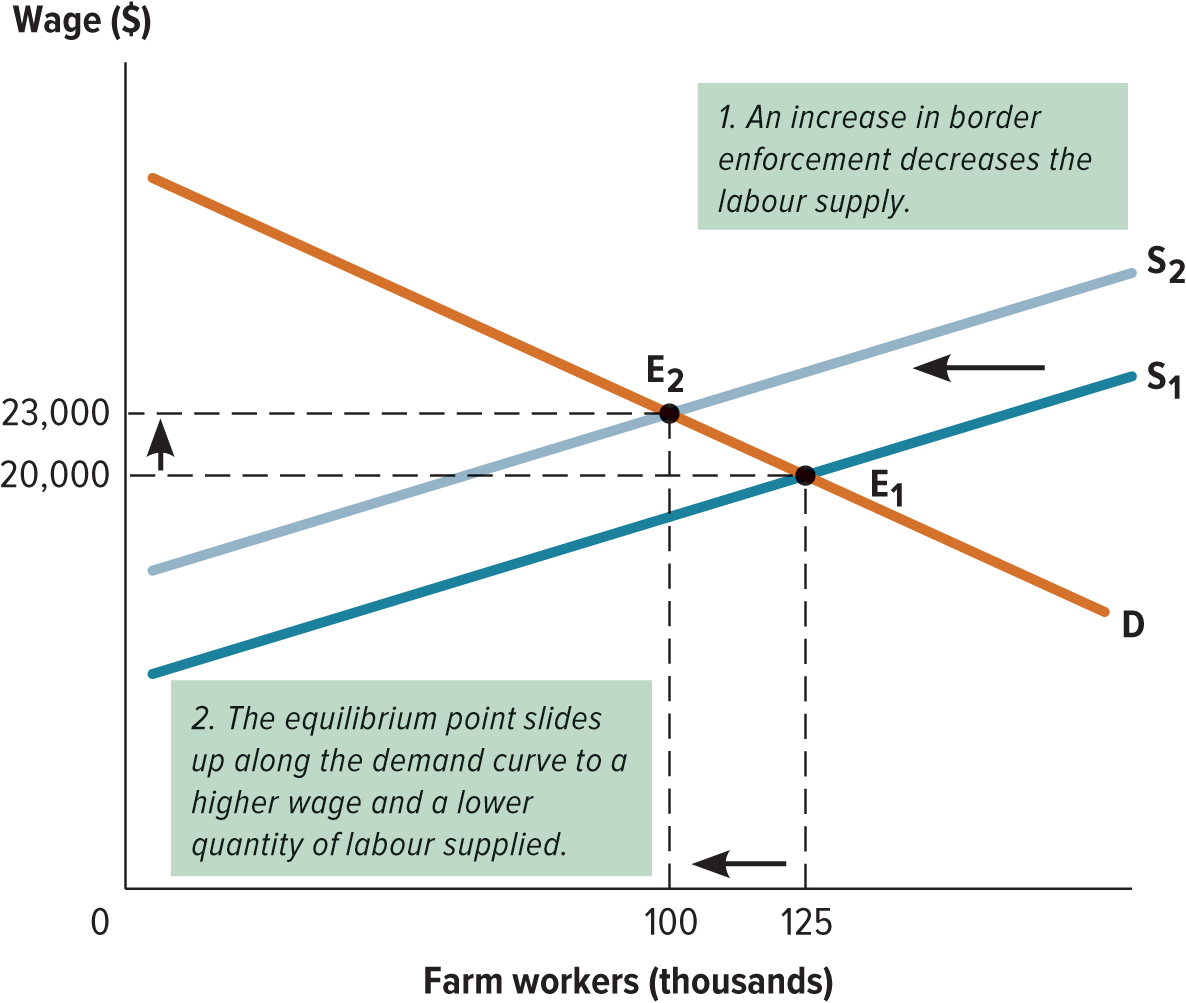
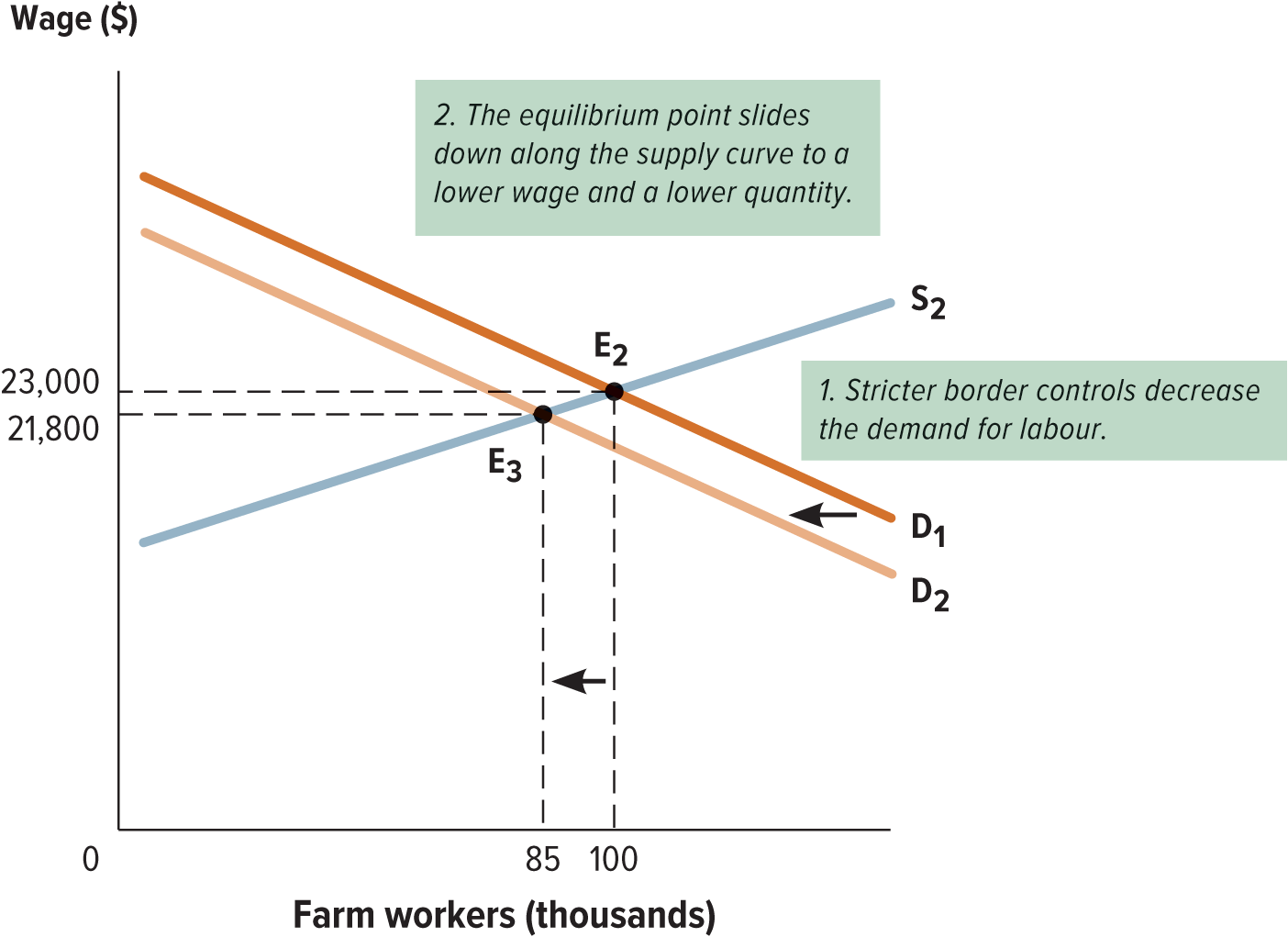
16.6. Human Capital
- human capital: the set of skills, knowledge, experience, and talent that determine the productivity of workers
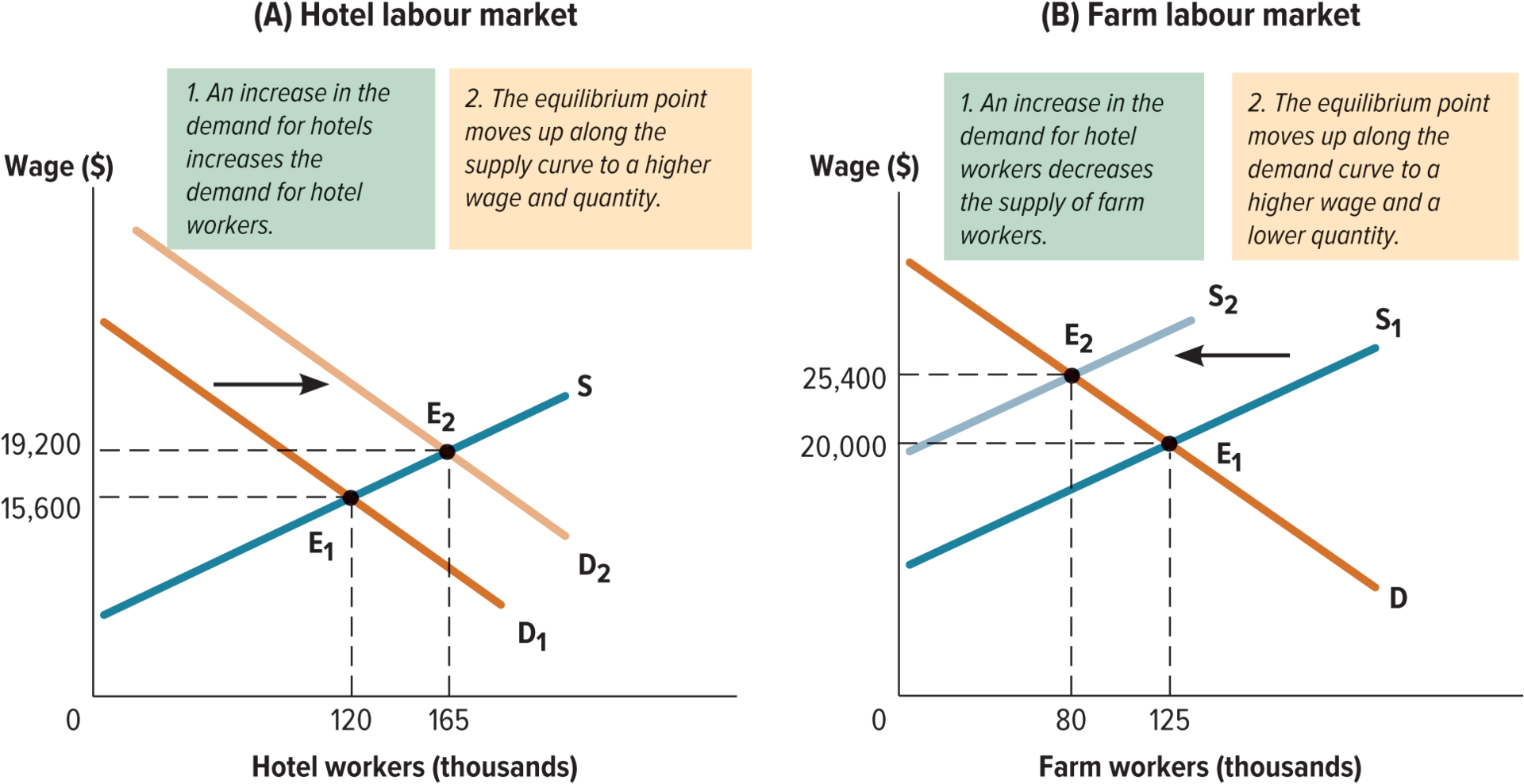
- Workers differ from one another because they have different amounts of and types of human capital to offer
- Allow them to be more or less productive than others at different tasks
- Some types of human capital makke workers more productive at a wide range of jobs; others relate to very specific tasks
- Differences in human capital are a key determinant of wages, and therefore of differences in people’s incomes
16.7. Markets for Land and Capital
- The markets for land and capital are similar to markets for labour; the major difference is that land and capital can be purchased as well as rented
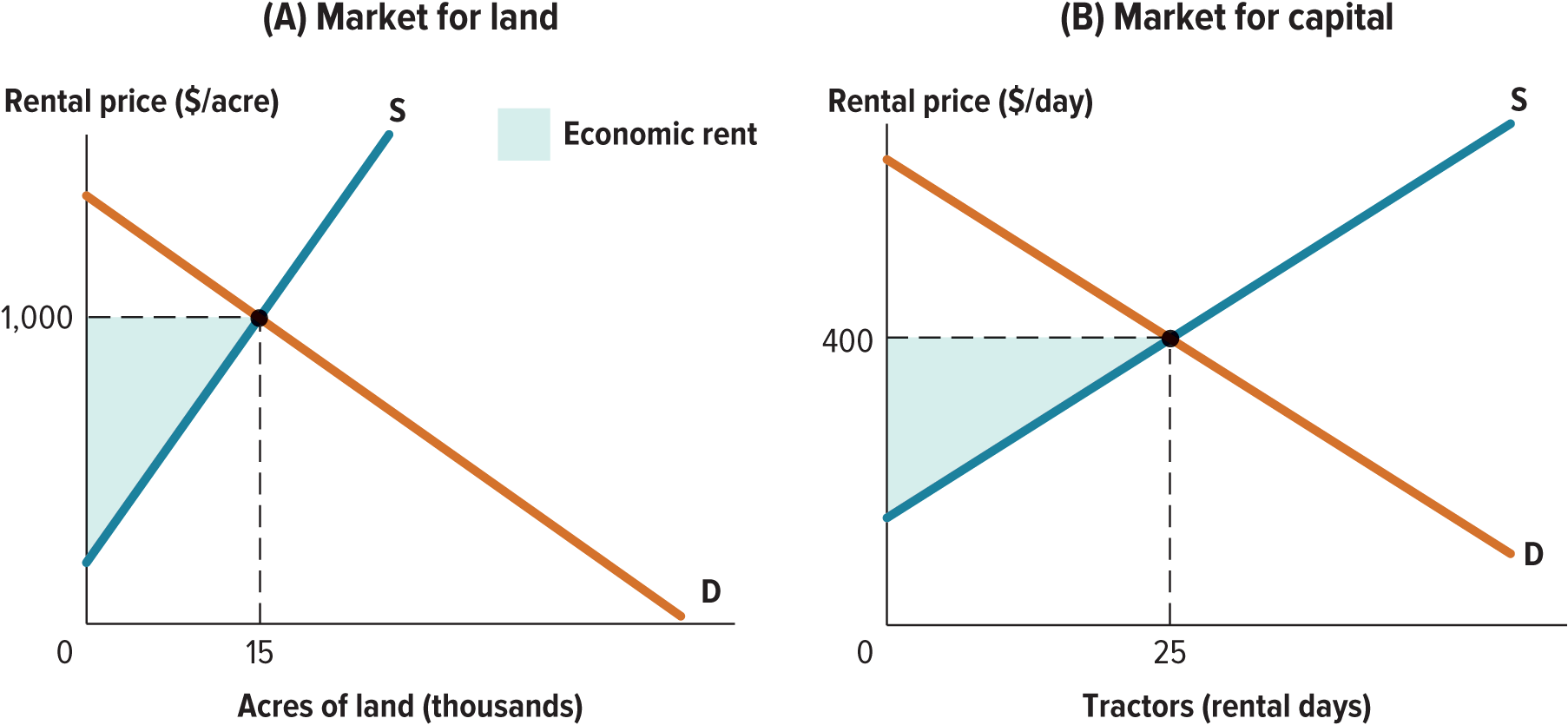
- rental price: the price paid to use a factor of production for a certain period or task
- purchase price: the price paid to gain permanent ownership of a factor of production
- The word capital is often used loosely to refer to financial capital as well as physical capital
- When people invest money in the stock market or a company, they are using financial capital to purchase a share of the company’s physical capital
- economic rent: the gains that workers and owners of capital receive from supplying their labour or machinery in factor markets
16.8. Minimum Wages and Efficiency Wages
- There are two common reasons for a wage to rise above the market equilibrium: minimum wages and efficiency wages

- A minimum wage is a price floor on the price of labour
- In an efficient labour market, a price floor causes excess supply and unemployment
- efficiency wage: a wage that is deliberately set above the market rate to increase worker productivity
16.9. Company Towns, Unions, and Labour Laws
- Just as markets for goods and services are not always perfectly competitive, neither are labour markets
- Monopsony: a market in which there is only one buyer but many sellers
- A monopsonist has the market power to push wages below the market equilibrium
- Workers can also gain market power, by banding together to make joint labour supply decisions and push their wages above the equilibrium
- Through regulations, the government can also impose costs on labour markets